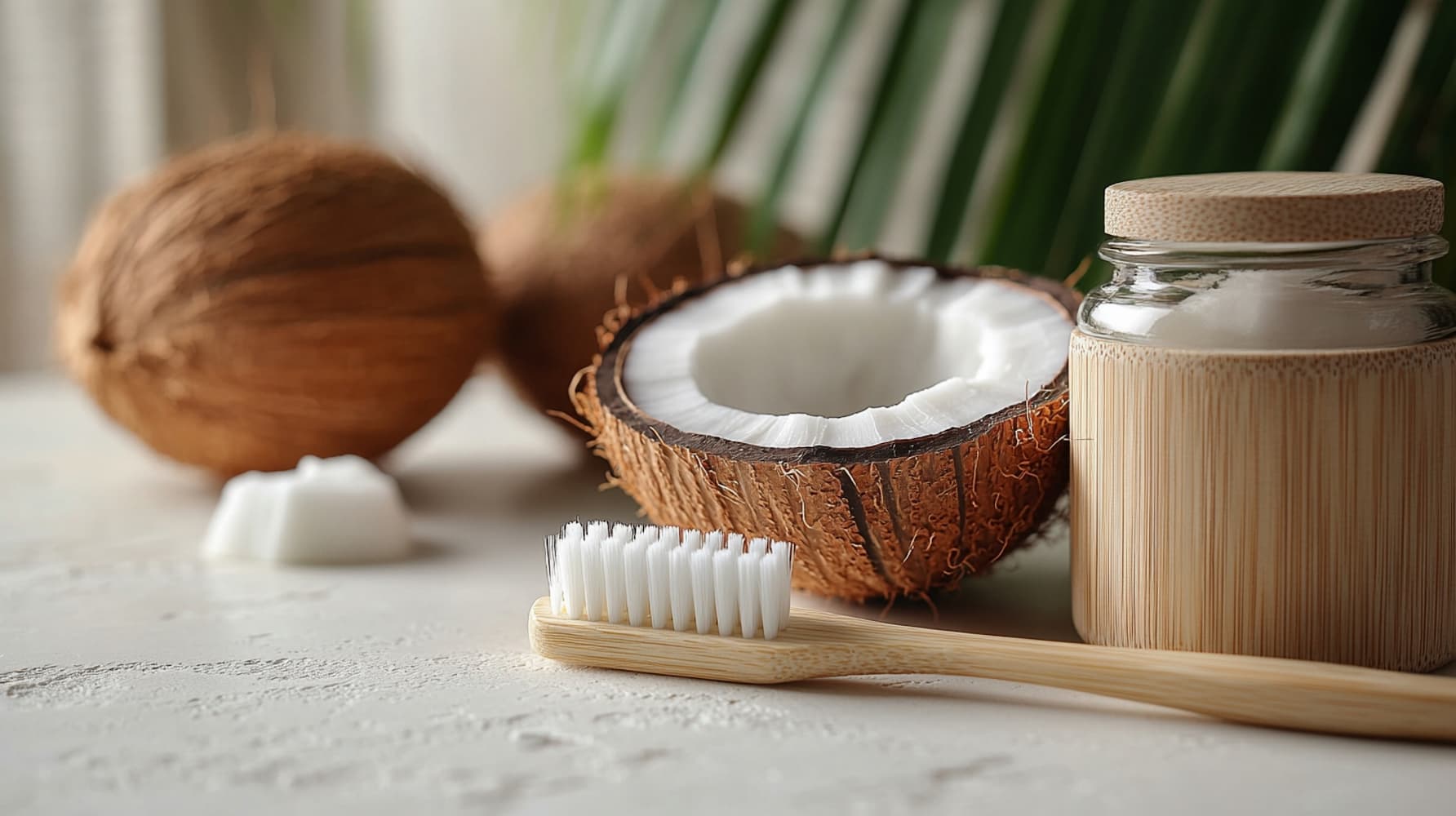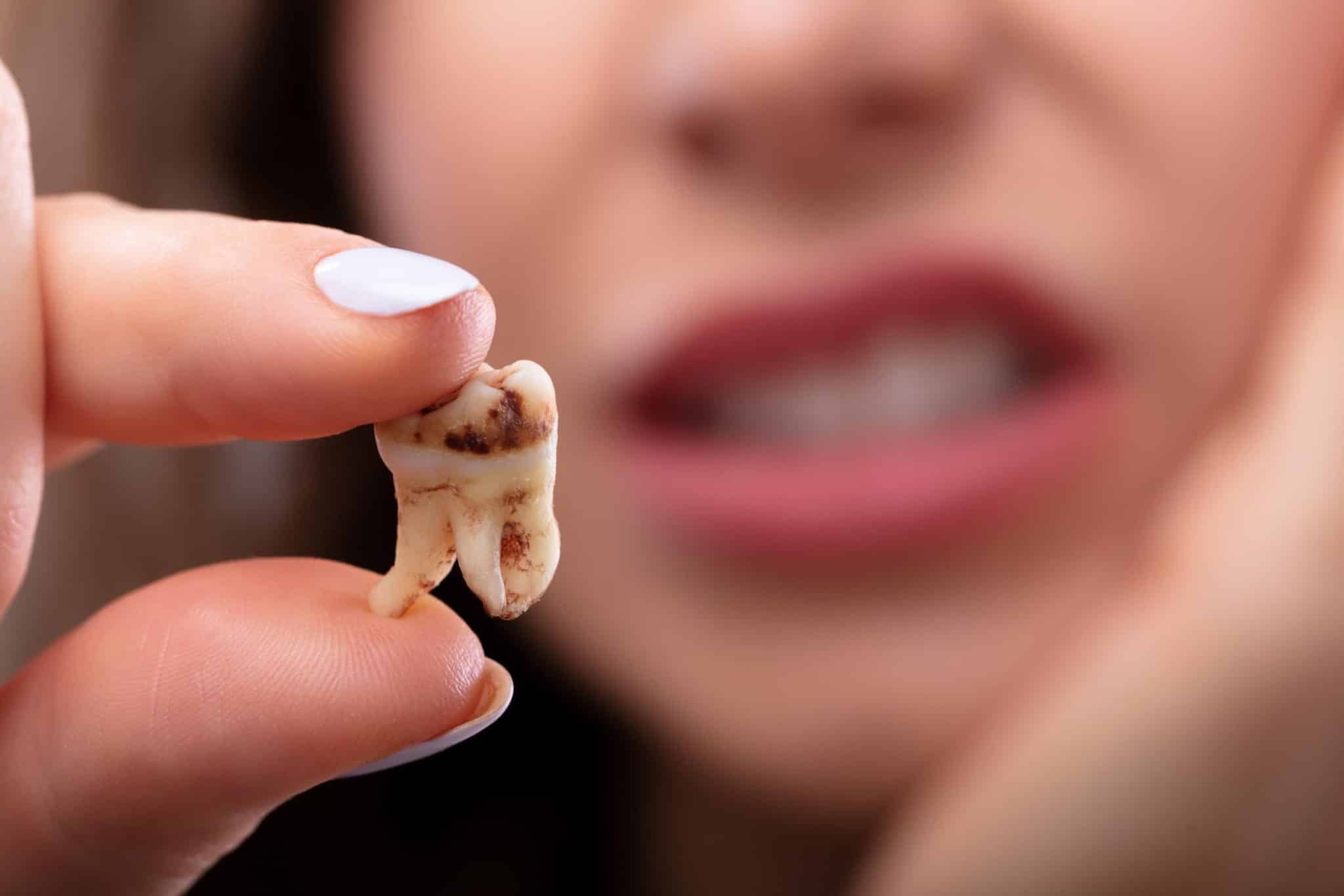In Summary
- Oil pulling (gandusha) involves swishing a vegetable oil in the mouth each day
- It is an Ayurvedic practice originating from Indian tradition
- Many benefits are attributed to oil pulling, although some have not been scientifically proven
- Dentists warn that oil pulling should only be used as a complement to a daily and thorough oral hygiene routine
Oil pulling is an Ayurvedic practice derived from the Indian tradition that is developing more and more. Many benefits are attributed to it and some of them are still very controversial, notably by dental professionals.

What is oil pulling and where does this practice come from?
Oil pulling, also called ‘gandusha’, is an Ayurvedic practice from Indian medicine that aims to improve oral health for those who make it a daily routine.
Practically, it involves cleaning the mouth of bacteria using a vegetable oil (such as sesame oil or coconut oil, for example).
The routine is quite simple: you need to take the equivalent of a tablespoon of sesame or coconut oil in your mouth each morning upon waking, and perform a mouthwash for 10 to 20 minutes, making sure the oil circulates well throughout the oral cavity.
In contact with saliva, the oil emulsifies and changes texture for a deep cleansing.
At the end of the ritual, simply spit out the oil and rinse your mouth with water.
What are the benefits attributed to oil pulling?
The benefits attributed to oil pulling are numerous and varied. It is said to:
- Reduce the formation of dental plaque, cavities, and possible inflammations, particularly in the gums (such as gingivitis)
- Improve oral hygiene for those who practice it daily
- Provide better oral comfort with a sensation of cleaner teeth and fresher breath
- Help combat halitosis (bad breath)
- Whiten teeth
- Aid digestion
Did you know?
Some also attribute to oil pulling general health benefits, believing this Ayurvedic practice can reduce migraines, chronic fatigue, eczema, and even constipation.
What does science say about the effectiveness of oil pulling?
Currently, science cannot confirm whether oil pulling truly delivers all the claimed benefits.
However, recent studies suggest that oil pulling—especially using coconut oil—may be almost as effective as chlorhexidine-based mouthwashes (an antiseptic found in most conventional mouthwashes).
This makes oil pulling a more ‘natural’ (and cheaper) alternative to traditional mouth rinses.
What are the disadvantages and limitations of oil pulling?
While oil pulling offers many benefits, this Ayurvedic practice also has its limitations.
First of all, it is quite time-consuming and demanding. To follow the Ayurvedic tradition, oil pulling should be done every morning on an empty stomach for 10 to 20 minutes. This is not always easy to include in a regular morning routine.
Most studies and dentists agree that oil pulling with vegetable oils (like coconut oil) does not actually whiten teeth.
Some cases of pneumonia have also been reported among individuals who practiced oil pulling regularly—especially those with swallowing disorders who tended to ingest some of the oil during the process. Even though coconut and sesame oils are natural, they become loaded with bacteria after a session and must not be swallowed.
Also, beware of allergies. For example, if you are allergic to coconut, avoid using coconut oil for oil pulling and opt instead for sesame oil.
CHD Tip
At CHD, we offer two effective, long-lasting, and safe teeth whitening options: at-home whitening using custom-made trays (390.-CHF), or in-office whitening performed by one of our dentists, combined with the at-home option (750.-CHF total).
Is oil pulling recommended by dentists?
Most dentists agree that oil pulling does not pose a risk to patients’ oral health and, when used wisely, can complement daily dental hygiene routines.
However, dentists emphasize the importance of maintaining proper oral hygiene: brushing teeth several times a day, cleaning between teeth, and scheduling dental checkups and professional cleanings at least once a year.
Oil pulling should never replace the essential basics of oral hygiene.
FAQ
Can oil pulling replace toothpaste and brushing?
Absolutely not. Oil pulling should only be used to supplement daily brushing with a suitable toothbrush and toothpaste (along with interdental cleaning).
How long does it take to see results?
If the oil pulling ritual is done daily upon waking for 10 to 20 minutes, it takes a few days—or even weeks—to notice concrete results: better oral comfort, smoother teeth, fresher breath.
Can any oil be used for oil pulling?
To practice oil pulling, you should use a cold-pressed vegetable oil to retain the active properties. Sesame and coconut oils are the most commonly used, but olive or sunflower oils are also suitable.
– Oil pulling (gandusha) involves performing a daily mouthwash using vegetable oil
– It is an Ayurvedic practice originating from Indian tradition
– Many benefits are attributed to oil pulling, but some have not been scientifically proven
– Dentists warn that oil pulling should only be used as a complement to impeccable daily oral hygiene

